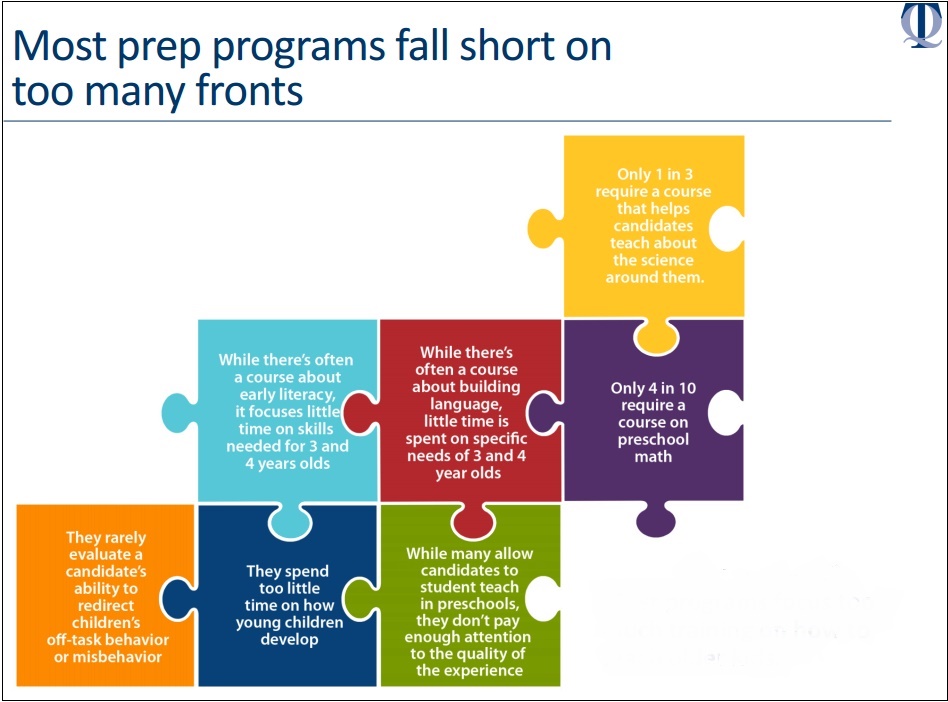Chronic absenteeism among students elicits serious concern for good reason. When pupils miss many days of school, they risk falling behind. This further puts them at risk of dropping out or being sucked into the criminal justice system through truancy proceedings, which is punitive for both students and their parents. (A bill proposed earlier this year would decriminalize truancy; Ohio lawmakers should revisit it soon.)
If attendance is so critical for students, isn’t it even more critical for teachers—especially since they are the most important in-school factor impacting student success? Yet data from the latest Civil Rights Data Collection (CRDC), a federal survey of all public schools in the country, demonstrates that teacher absenteeism is a pressing problem nationally and in Ohio.
We learn from the CRDC report (from the 2013–14 school year) that 28 percent of Ohio public school teachers (in traditional public and charter schools) were absent for ten or more days for sick or personal leave. This compares to 27 percent of teachers nationally. CRDC does not count paid professional development, field trips, or other off-campus activities with students, nor does this estimate include paid holidays or paid vacation time.
Is teacher absenteeism concentrated in particular districts and schools, or is it generally widespread? In how many of Ohio’s 3,600 schools is it a serious problem? The table presents a brief analysis of statewide findings.
[[{"fid":"116731","view_mode":"default","fields":{"format":"default"},"type":"media","link_text":null,"attributes":{"height":"429","width":"1200","style":"width: 600px; height: 215px;","class":"media-element file-default"}}]]
*These numbers are cumulative: the forty-seven schools where 90 percent or more teachers missed ten or more days are also included in the previous columns.
The findings show that teacher absenteeism is widespread across the state, and is an urgent problem in at least several hundred schools. Yes, we should be cautious in drawing too many interpretations; this data is from one year and there could be reasonable explanations for variance (especially among small schools). For example, a school may have had lots of teachers on maternity leave, or experienced an outbreak of flu.
Still, it’s apparent that many districts face challenges with teacher attendance, some far worse than others. Graph 1 (below) provides data for Ohio’s “Big 8” urban districts to illustrate the range and severity of the problem, especially in Cleveland. We should be particularly concerned about teacher attendance in districts like these, which serve large percentages of low-income students and students of color, youngsters for whom quality learning time is particularly critical.
Graph 1: Percentage of teachers missing ten or more days, Ohio “Big 8” urban districts (2013–14)
[[{"fid":"116732","view_mode":"default","fields":{"format":"default"},"type":"media","link_text":null,"attributes":{"height":"424","width":"614","style":"width: 500px; height: 345px;","class":"media-element file-default"}}]]
At least four of Ohio’s Big 8 urban districts—Canton, Cleveland, Columbus, and Toledo—had serious problems with teacher attendance during the school year studied. Cleveland’s astounding—appalling—numbers are backed by a 2014 report by the National Council for Teacher Quality (NCTQ) that ranked Cleveland as second worst nationally in terms of chronic teacher absenteeism, defined as teachers missing eighteen or more days. (The NCTQ report relied on an older version of the CRDC data.) In that report, more than a quarter of Cleveland teachers were chronically absent. However, the relatively low numbers in Akron, Dayton, and Youngstown suggest that sky-high absentee rates don’t have to be the norm in urban schools. In fact, the NCTQ report found no relationship between teacher absenteeism and school poverty rates.
Graph 2 depicts the percentage of teachers missing ten or more days in Ohio’s ten largest districts outside the Big 8. These districts are varied in the number of disadvantaged students they serve and seem to align with NCTQ’s previous finding that more-privileged districts sometimes also struggle on the teacher attendance front. Districts marked with asterisks were ranked among the thirty wealthiest in the state. As you can see, even Olentangy Local Schools, a suburban district outside of Columbus in which just 7 percent of students are poor, had almost a third of its teachers miss ten days or more. A quick glance at several other posh districts around the state reveals a similar pattern: Bexley—31 percent; Upper Arlington—30 percent; New Albany—24 percent; Beachwood—43 percent; Oakwood—26 percent; Chagrin Falls—18 percent. This puts them in worse standing on teacher absenteeism than about half of Ohio’s most challenged urban districts. Discounting Cleveland, which clearly skews the “Big 8” urban average, Ohio’s urban districts (Graph 1) actually had fewer teachers missing ten or more days of school (33 percent) than the top ten districts (36 percent) (Graph 2).[1]
Graph 2: Percentage of teachers missing ten or more days, Ohio’s largest (non-Big 8) districts (2013–14)
[[{"fid":"116733","view_mode":"default","fields":{"format":"default"},"type":"media","link_text":null,"attributes":{"height":"391","width":"619","style":"width: 500px; height: 316px;","class":"media-element file-default"}}]]
The costs of teacher absenteeism are immense, totaling more than $4 billion annually for the country as a whole, according to a 2012 report from the Center for American Progress. In Cleveland, the minimum cost of substitute teachers alone is anywhere from $3 to $6 million annually—and likely much higher.[2] Taken to scale, the 29,500 Ohio teachers—28 percent of the state’s total teaching workforce—who missed ten or more days in 2013–14 created monumental costs for districts and taxpayers.[3] Beyond the cost of hiring substitutes, teacher absenteeism takes a toll on school culture. It communicates to staff and students alike that attendance isn’t a priority—and thus may inspire others to take more days and make absenteeism and truancy the norm. When substitutes aren’t available, it creates enormous burdens on fellow teachers who have to teach additional students, or miss planning or break periods to cover for their colleagues. And it disrupts student learning. When any teacher—let alone the majority in a school building—miss 5 or 10 percent of the school year, you can bet that students are missing out instructionally and that the scope and sequences of key subjects is heavily disrupted.
One likely reason that schools have so many absent teachers on a given day is because the leave provisions set forth in collective bargaining agreements tend to be generous. Cleveland’s collective bargaining agreement, for example, allots eighteen paid sick days and three paid personal days out of 185 instructional days (a whopping 11 percent of the school year). Compare this to the average sick time for private sector employees (ten days and possibly a handful of personal days), or for state employees (ten sick days and four personal days)—who work on average eighty days more than teachers. In addition, most contracts allow extensive sick leave accumulation from year to year; consider Dayton Public Schools’ recent $149,000 sick leave payout to its outgoing superintendent as just one example.
It’s also noteworthy that the teacher absenteeism problem seems to be most acute in traditional public schools bound by collective bargaining agreements. Among the 330+ charter schools in the study—almost none of which has a labor contract—not a single one had very high rates of teacher absenteeism (defined as 75 percent or more missing ten days). Fewer than 2 percent saw half their teachers miss ten days, even though many charter schools have longer work days and school years and their teachers have the same working conditions that make sickness likely, such as germ exposure and sheer exhaustion (in fact, charter educators may have tougher working conditions because their schools can only be located in Ohio’s academically and economically challenged communities). The charter comparison data suggest that the culture in unionized traditional public schools has made high rates of absenteeism the norm in many schools.
If we are serious about ensuring that more students receive solid instruction and stay on pace, curbing teacher absenteeism must be a priority. Teacher unions responsible for negotiating such generous leave policies should consider the adverse impact such policies have on students. Districts should work hard to improve teacher attendance. And teachers themselves should recognize how much is at stake when they take significant leave beyond the generous vacation, paid professional development, and vacation time allotted to them. When it comes to raising student achievement—especially those for whom so much hangs in the balance—there can be no sacred cows.
Update, August 9, 2016:
To access the CRDC Ohio data for your own school or district, go here. Data are reported for schools but can easily be calculated to find district averages. Column YA ("SCH_FTETEACH_TOT") is the total number of FTE teachers. Column YG ("SCH_FTETEACH_ABSENT") is the number of FTE teachers who were absent more than 10 school days during the school year. Column YH is an added column that calculates the percentage of each school's total FTE teachers missing 10 or more school days.
[1] The average for the Big 8 urban districts, including Cleveland, is 45 percent.
[2] In the 2013–14 CRDC survey, 2,288 Cleveland teachers missed ten or more school days. If we err on the conservative side and assume all of those teachers missed only ten days (even though we know that’s not the case given the high chronic absentee rate reported in the NCTQ report), at a daily substitute rate of $129 to 144 (not including long-term sub rates, which are higher) the district would have paid $2.95 million to $3.3 million for substitute teachers alone. Assuming each of those teachers were absent an average of fourteen days, the costs would be more in the ballpark of $4.1 to $4.6 million. If those teachers averaged eighteen days, the cost would be $5.3 to $5.9 million. Of course this also leaves out any additional overhead costs and the cost of longer-term absences beyond the eighteen days.
[3]If 29,500 teachers each took ten days (the minimum), that’s 295,000 substitutes across the year. If substitutes were found for only 250,000 cases, at a cost of $120 per day (far lower than Cleveland’s average), that totals $30 million annually. And the actual cost is probably much higher.










